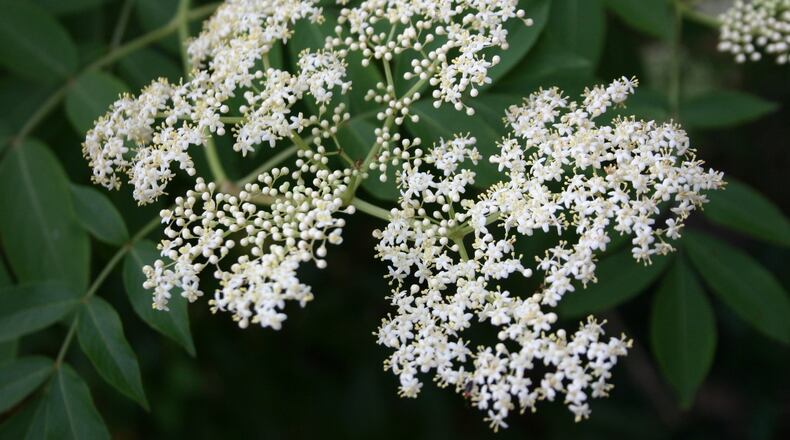Q: I fell in love with the fragrant flowers and berries of the European elder when I lived in Ireland. I see something that looks similar growing along roadsides here. I'm thinking it is Sambucus canadensis, but the flowers have no smell. Is Sambucus nigra what I'm looking for? Heather Prichard, Jasper
A: It is not clear that Sambucus nigra and Sambucus canadensis are different elderberry species. Taxonomists say that one could be a sub-species of the other. It is my understanding that flowers within the species may vary in fragrance. I had delicious elderberry tea when in England. The flowers that were steeped in hot water there looked identical to the elderberries I see along roadsides here. Consider stopping to smell the flowers of patches of elderberry you spot. There are usually lots of small shoots nearby that you can transplant to your landscape.
Q: In all this dampness, we have had a lot of millipedes. They crawl up the side of the house and across the drive. Can they harm anything? Rick Parks, Madison
A: They don't bother anything except your nerves. It's creepy to step on one or a dozen and hear the crunching sound. After rains like we've had it's not uncommon to sweep up hundreds, if not thousands, from sidewalks and garage openings. You can control them using landscape insecticide spray or granules in a sixteen-inch wide band around your house foundation or in places where you see them collecting.
Q: I have an 8,000-square-foot bermuda lawn and I use a reel mower. I put down 25 pounds of 32-3-8 in early May. When do I fertilize again? Harry Moran, Canton
A: Much of the decision about fertilizing a bermudagrass lawn depends on your enjoyment of mowing. If you like having deep green grass and can mow every four or five days, fertilize bermudagrass every six weeks. If you are more typically a weekend mower, fertilize every eight weeks. Start when the lawn is 90 percent green and stop in mid-September.
Q: We have some really old boxwoods that honeysuckle has almost taken over. How can I kill the vine? Dan Jolly, Bartow County
A: The best honeysuckle control is to clip the vine at ground level under the boxwoods and immediately dab some glyphosate (Roundup, etc) on the stump using a foam paintbrush. You can then pull the vine out completely and the stump will not resprout.
Q: I recently had my house pressure-washed and they used a chlorine-based solution. Some of the spray got on a Japanese maple and turned some leaves brown. Will this be long-term damage or will these leaves come back next year? Jim Brooky, Cartersville.
A: In most cases, quickly washing bleach solution off of tree leaves prevents damage. But injury can happen if the work is done on a hot, sunny day. Even though your leaves were burned, I don't think any damage will be seen on your tree next year.
About the Author
The Latest
Featured

